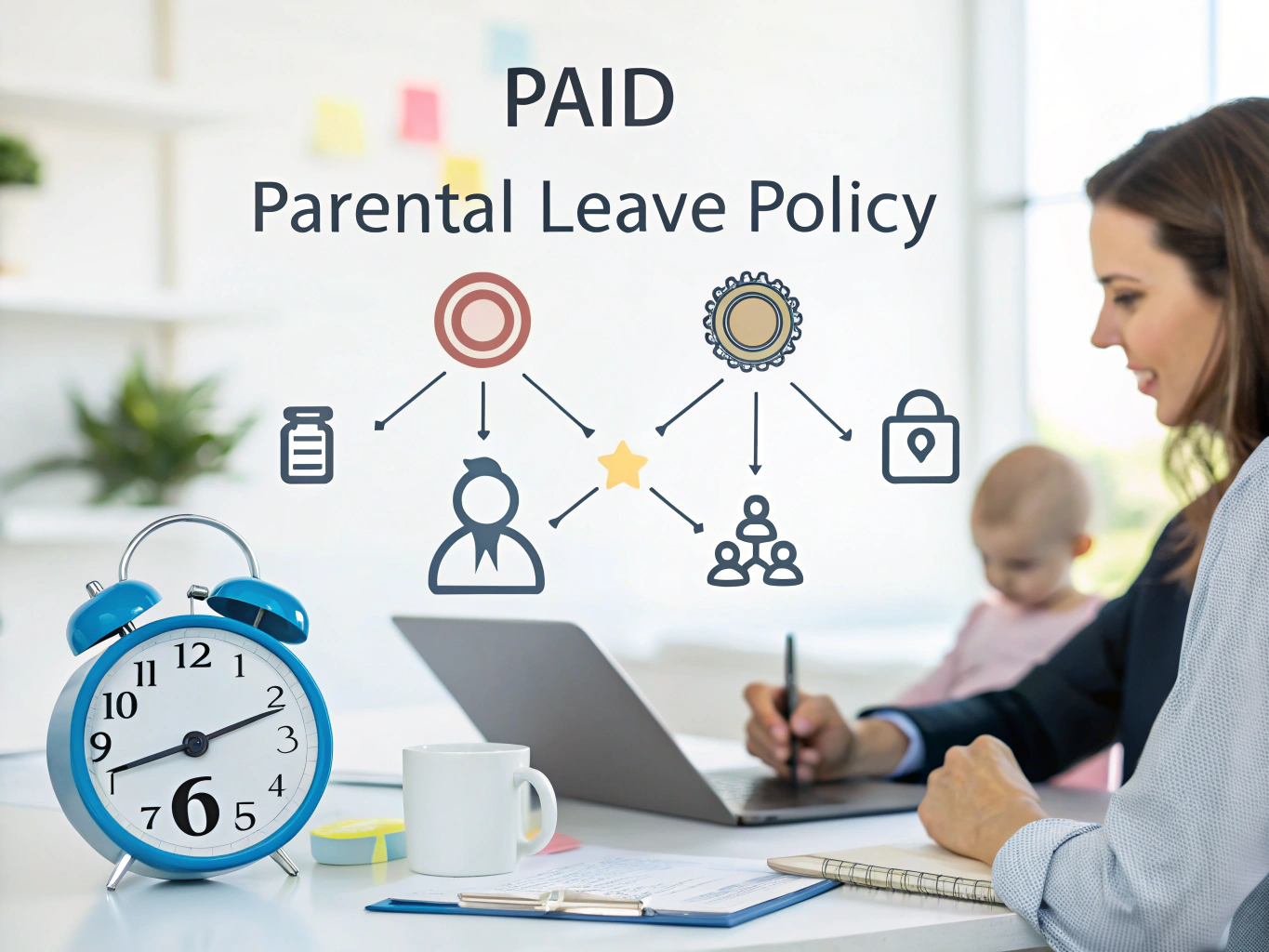Definition
A Paid Parental Leave Policy is a company benefit that allows eligible employees to take a specified amount of time off with full pay following the birth or adoption of a child. This policy helps employees adjust to their new roles as parents while alleviating financial pressures during a significant life transition. It’s not just a nice-to-have; it’s an essential part of creating a supportive workplace culture.
Key Components
When crafting your Paid Parental Leave Policy, several key components are essential to ensure clarity and fairness for all employees. Here are some must-have elements:
- Eligibility: Generally, this policy applies to full-time employees who have been with the company for at least one year. It’s important to clearly define eligibility, so everyone knows who qualifies. For example, you might consider extending eligibility to part-time employees on a prorated basis based on their hours worked.
- Duration: Specify how long employees can take paid leave—typically ranging from a few weeks to several months. For instance, you might offer 12 weeks of paid leave for both mothers and fathers, which can be taken within the first year of the child’s arrival.
- Compensation: During the leave period, employees should receive their full base salary. It’s also crucial to mention that benefits, like health insurance, will remain active, so employees won’t face any financial strain while adjusting to their new family life.
- Notification: Outline the process for notifying management and HR about taking parental leave. For example, you might require employees to give at least 30 days’ notice, allowing enough time for work adjustments.
- Return to Work: Assure employees they can return to their original position or a similar one without any negative repercussions on their career. This reassurance can help alleviate fears of career setbacks after their leave.
- Coordination with Other Leave: Clarify how this policy interacts with other leave programs, such as Family and Medical Leave Act (FMLA) leave or personal time off. This clarity can help employees plan their time off effectively.
Importance in the Workplace
Implementing a Paid Parental Leave Policy is not just about compliance or being competitive; it’s about fostering a supportive environment where employees feel valued. Imagine an employee who just became a parent—this is a momentous occasion, and having the opportunity to bond with their newborn without financial stress can significantly affect their loyalty and productivity. Companies that prioritize family support often see higher employee morale and retention rates, creating a win-win scenario.
Best Practices
To effectively implement a Paid Parental Leave Policy, consider these best practices:
- Customize Your Policy: Tailor the policy to reflect your company culture and values. For example, if your organization prides itself on inclusivity, ensure the policy is accessible to all employees, including same-sex couples and adoptive parents.
- Communicate Clearly: Make sure all employees are aware of the policy and understand how it works. Regularly share updates and information through employee handbooks, meetings, and intranet resources. Clarity breeds trust.
- Solicit Feedback: Engage employees in conversations about the policy’s effectiveness. If you regularly gather input, it shows you care about their experiences and are willing to make adjustments based on their needs.
- Train Managers: Equip managers with the knowledge to handle parental leave requests sensitively and supportively. For instance, offering training on how to discuss parental leave can help foster an open and empathetic workplace.
- Promote Work-Life Balance: Encourage a culture that supports work-life balance. Highlighting the importance of family time and mental well-being can enhance the overall workplace atmosphere.
Legal Considerations
When developing your Paid Parental Leave Policy, it’s essential to be aware of relevant legal requirements, as these can vary by country or region. In the U.S., for instance, the Family and Medical Leave Act (FMLA) provides certain employees with the right to take unpaid leave to care for a newborn or adopted child. While FMLA does not mandate paid leave, offering it can ensure compliance with various regulations and demonstrate your commitment to employee welfare. Always consult a legal expert to ensure your policy aligns with local laws and regulations.
Conclusion
Understanding and implementing a Paid Parental Leave Policy can significantly impact your workplace culture and employee retention. By offering this benefit, you show that your organization values the personal lives of its employees, creating a foundation of loyalty and satisfaction. Take the time to customize your policy to fit your unique organizational needs and foster an environment where employees feel supported during one of the most exciting times in their lives. Remember, a happy employee is a productive employee!




